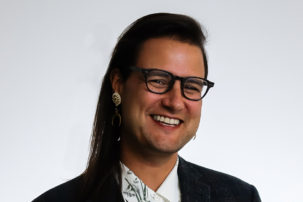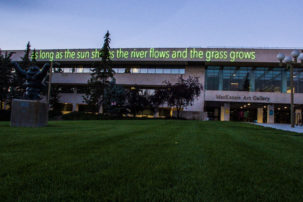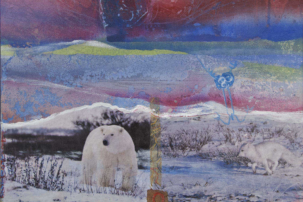The only known buffalo robe painted by Sitting Bull has returned to Saskatchewan after decades in the United States.
On June 20, after at least 75 years away, the robe went on view for its first-ever public display in Canada at the MacKenzie Art Gallery in Regina. There, it’s part of the exhibition “Walking with Saskatchewan,” which will be up until April 2020.
“It’s the only known robe that he painted that’s [still] in existence,” says John Hampton, director of programs at the MacKenzie. “There was word of another one, and he gifted it to the pope—but the Vatican lost it.”
The legendary Hunkpapa Lakota chief and artist painted the robe between 1877 and 1881. At that time, Sitting Bull was seeking asylum from the United States government in the territory now known as Saskatchewan. While in Canada, he traded with local Gus Hedderich, and later gave Hedderich the robe. After Hedderich and his wife passed away, the robe was donated to the State Historical Society of North Dakota.
“This era of Sitting Bull’s life is very much about borders and border crossing,” Hampton notes. “The Sioux people, which include the Hunkpapa Lakota, of which Sitting Bull was a chief, were people of the Great Plains. That territory encompassed all of the Dakotas, some of the Canadian Prairies, as well as a lot of the midwest and central United States. Sioux and other Plains Indians would have travelled very freely at that time—that border was relatively new when Sitting Bull crossed it.”
And while Sitting Bull sought asylum in Canada at the time, it’s key to understand that what he actually found here was quite different.
“He came up to Canada to have safety and distance [from persecution by the US government],” says Hampton of Sitting Bull. “But that was the time period of John A. Macdonald and the starvation of the plains. They were trying to flush out the Indigenous peoples in what is now Saskatchewan through forced starvation. They did the same thing to Sitting Bull…. It wasn’t a real sanctuary.”







